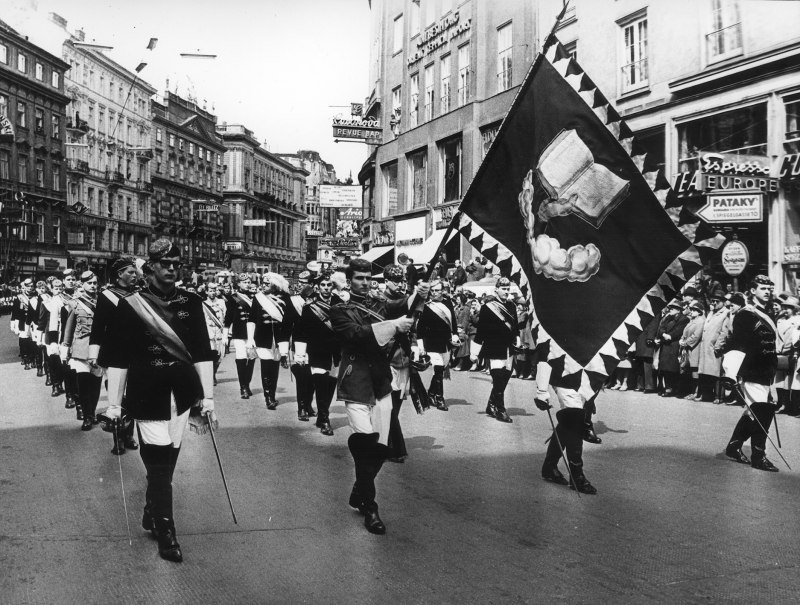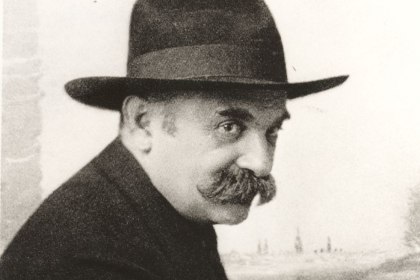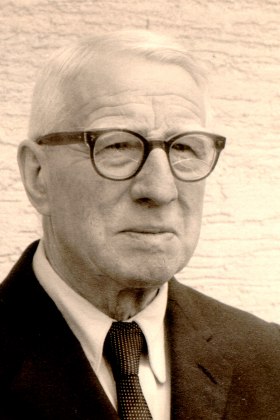Student corporations in the 19th and 20th century
Fraternities, both völkisch and Catholic, have a – for Austrian conditions – long history at the University of Vienna. This history has their role as actors as well as subject of political controversies as a common thread.
In Prussia, the first corps were founded in the late 18th century, and in 1815 the so-called “Urburschenschaft” (“original fraternity”) was established in Jena. Subsequently, a differentiated system of fraternities developed. In the Habsburg monarchy, student corporations in their current form developed comparatively late. The proto-democratic and liberal ideals of many fraternities made student associations suspicious to the repressive Metternich regime and led to the persecution of even the first signs of clandestine fraternity formations by the police in the pre-March era. The liberal and German-nationalistic demands of the revolt of 1848 that was strongly carried by students in Vienna reflect the central goals of the early German Burschenschaft-movement. After the fall of the 1848 revolution the following repression let many years pass until the first real wave of foundations of student associations (Burschenschaften, Corps, Landsmannschaften, etc.) began in Vienna. Some of the student corporations founded one after the other in the late 1850s still exist today. In contrast to the corporations in the German Reich, particularly the Burschenschaften had a critical stance towards the ruling house. This is less due to democratic and liberal considerations – the loss in 1848 put a stop to these ideals – and more due to them turning towards the Prussian (Protestant) rivals of the Habsburgs, who had triumphed over them in 1866 and over France in 1870/71. A majority of the fraternity students wanted mighty Prussia to come and as a German ruling power implement their wish for a national unification.
Illiberal turn and anti-Semitism
This unification was carried out with the foundation of the German Reich in 1871 – without the inclusion of Austria. Many corporations were insulted by this “exclusion from Germany” and it was often answered with a hardening of their ideology: their own German culture was emphasized ever more fanatically, especially in the context of the Austrian multiethnic state, its competing nationalisms and Austria’s position as a “border country” in the German-speaking area. Völkisch (biologistically based) nationalism came to the forefront and the anti-Semitic legacy of the Burschenschaft-movement’s founding era, connected to names such as Friedrich Ludwig Jahn, saw a return to popularity. In the „Billroth-Affair“ of 1875 the völkisch fraternity students rallied behind the university surgeon of the same name, and in 1892 they mobilized against internist Hermann Nothnagel, an opponent of anti-Semitism. Under Georg von Schönerer’s influence, the “wehrhaft” (able-bodied, able to defend oneself) associations and Vereine Deutscher Studenten (Associations of German Students, a type of corporation that originated in the 1880s) as well as Burschenschaften became pioneers of racial anti-Semitism in the universities and beyond. As early as the academic year of 1878/79 the Viennese Burschenschaft Libertas implemented an “Aryan paragraph” with many other fraternities following suit in the years after. In a further step, Jewish students were denied their “honor” and thus were considered “not capable of giving satisfaction”. Leading the way in this regard was a decree by the mainly Viennese “wehrhaft” associations consolidated in the Waidhofen Association in 1896. Most Burschenschaften in Vienna and other fraternities from all Austrian university cities subsequently adopted the “Waidhofen principle”. Voices opposing the rampant anti-Semitism with reference to the liberal and tolerant traditions in the history of student corporations remained a minority and were increasingly marginalized.
Academic culture struggle
Apart from Jews, Slavic and Italian students were also fought against – often with physical violence – by the völkisch fraternity students as “volksfremd” (“culturally foreign”). Leftist and Catholic fraternities (from 1859 in Innsbruck, from 1876 in Vienna) also drew the aggression of the “schlagende” Burschenschaften (fraternities that practice academic fencing). Conflicts in the student corporation sphere arose before the backdrop of a larger political-cultural conflict constellation: that between the German-völkisch, pro-Prussian, Protestant-“liberal” (even though their ideology was far from liberal) camp on the one side and the German-Austrian, Habsburg loyalist, Catholic conservative camp on the other. Diverging views on science and academic freedom also came into conflict in this regard. Around the turn of the century, this “cultural struggle” – even more so in Graz than in Vienna – became more severe. It found its peak in the “Wahrmund affair” in 1907/08, in which the conflict about Catholicism at the universities radiated up to the highest political echelons. For a short time, the shared experience at the front in the First World War led to a slight reconciliation between the two camps. In the 1920s they worked together in the framework of the student self-administration (Deutsche Studentenschaft, German student body) against their mutual enemies – Jewish, leftist and liberal students.
Fascisms and the Second World War
Both the Catholic and the völkisch fraternities became important pillars of dictatorships in the 20th century. Many Catholic corporates took up important positions in Engelbert Dollfuß’s and Kurt Schuschnigg’s corporative state (both had been members of the Cartellverband, the umbrella organization of Catholic student fraternities). Some flourished during National Socialism; others were persecuted under the regime and/or fought against it in the resistance. Almost all völkisch corporations were on the side of the regime after 1938. Their ruthless anti-Semitism and unconditional German nationalism had already led them to the National Socialist camp in the early 1930s and they had stirred up trouble at the universities since then. After the “Anschluss” all fraternities were dissolved, but the völkisch groups were allowed to reform in the framework of the National Socialist Students’ League due to their accomplishments. Of the three National Socialist rectors of the University of Vienna, two Eduard Pernkopf and Viktor Christian were Burschenschafter.
Restoration and loss of meaning after 1945
Immediately after the war, the Catholic student associations reconstituted themselves, but the völkisch groups only managed to restore themselves from the early 1950s onwards due to the de-Nazification policies In the Catholics’ wake they also received approval to organize events and to wear their “colors” on university ground. The power hierarchy had turned on its head: now the “schlagende” Burschenschaften were in the minority and thus largely stopped their violence against the Catholics. In student politics, they established themselves for a long time as the second strongest group in form of the Ring Freiheitlicher Studenten (RFS). Around 1970 they quickly lost importance. A large increase in student numbers and the inner diversification of the student population (not least in the shape of a growing number of female students) pushed the corporative system to the fringes of the university. Particularly its völkisch sector – as standard bearer for German nationalism in the Second Republic with a diffuse relationship to its National Socialist past – was increasingly viewed as anachronistic. Apart from rising opposition by left anti-Fascists (for example early in the Borodajkewycz affair of 1965), they also recently have had to deal with an academic administration that feels the need to distance itself from them. This has manifested itself, for example, in the prohibition of the weekly “Farbenbummel” (“color stroll”) of the Wiener Korporationsring (Vienna Corporation Association, WKR) from the Aula to the ramp of the University of Vienna’s main building, or the relocation and rearrangement of the “Siegfriedskopf” in 2006.
Articles
- Anti-Semitism at the University of Vienna
- “Furor teutonicus and racial hate”
- Student corporations in the 19th and 20th century
- The “Bärenhöhle” – a secret anti-Semitic group of professors in the inter-war period
- The Gleispach’sche Studentenordnung (Gleispach Student Regulation)
- Terror against the Anatomical Institute of Julius Tandler
- Expulsion of teachers and students in 1938
- The de-Nazification of the professorate at the University of Vienna
- Students and teachers as political actors in the 19th and 20th centuries
- Student corporations in the 19th and 20th century
- Terror against the Anatomical Institute of Julius Tandler
- Dismissal of political enemies at the University of Vienna during Austrofascism
- Expulsion of teachers and students in 1938
- External restructuring by the “Führer-principle” and National Socialist officials
- The de-Nazification of the professorate at the University of Vienna
Last edited: 06/01/18





